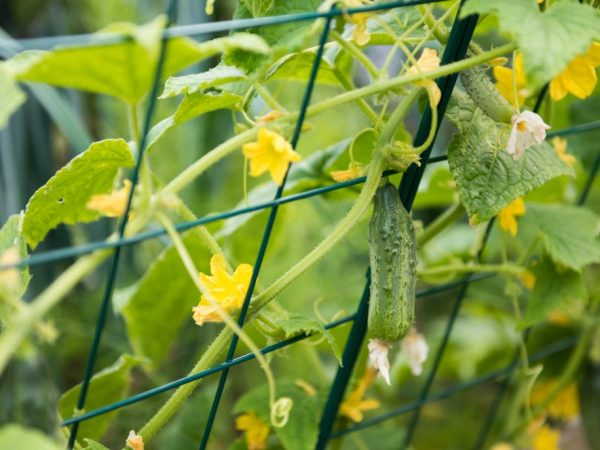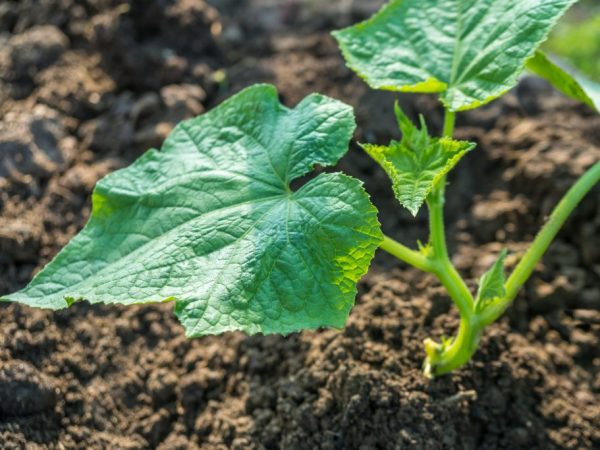Characteristics of Vyatich cucumbers
Cucumber is a common vegetable crop. Almost no salad or canning is complete without this vegetable. The special attention of gardeners was deserved by the Vyatich F1 cucumber variety, known for its good fruit taste and high yield rates.

Characteristics of Vyatich cucumbers
Variety characteristic
Due to the fact that this variety belongs to the category of hybrid plants F1, it can be grown both in greenhouses and in the open field.
Description of bushes
The bushes of the variety are powerful, medium-sized. The female type of flowering dominates. This variety is fertilized without pollination. The plant is characterized by long fruiting and increased thermophilicity. The nodes of the bush form 4 ovaries. It takes about 40 days between sowing and harvesting. The plant needs very fertile soil. Vyatich is a strong variety, like all patrenocarpic hybrids, it is very resistant to disease.
Description of the fetus
The length of the fruit is about 13 cm, the diameter can be up to 4 cm, and its weight is about 110 g. The skin of the fruit is covered with medium-sized tubercles. The fruit has good taste, the pulp is sweet, pleasant, there is no bitterness.
Care
Plant health depends on caring for them. If you take care of your plants properly, they will not get sick and will bear high-quality fruits.
Planting care

Good temperature conditions are important for growth
The planting of cucumbers is organized in early spring. The best soil for growing the Vyatich (F1) cucumber variety is medium clay soil saturated with oxygen. Before planting, the seeds are soaked in a solution of water with useful trace elements, then they are dried and placed in the ground. The air temperature is kept around 28⁰C. When signs of the first shoots appear, the lighting is increased and the temperature decreased to 17⁰C. After 3 days, the shoots are tied to a trellis to give them support.
There are also 2 basic rules:
- the seeds must not be buried more than 3 cm;
- for the rapid growth of bushes, very good temperature conditions and rich soil are needed.
Care after landing
According to the description, after planting, you need to monitor the site so that there are no remnants of other plants and weeds:
- sometimes it is required to loosen the soil;
- cucumbers need daily watering;
- when the plants grow, they begin to feed (organic fertilizers: 1 kg of chicken manure per 10 liters of warm water and water the bushes with this solution);
- the crop is harvested no earlier than 2 months after sunrise;
- you can harvest the fruits 3 times a week.
Diseases and pests
Vyatich (F1) rarely gets sick, but some ailments can still strike him.
Pests
- Whitefly is a small white midge. She drinks the sap of plants and leaves behind sooty mushrooms and sluggish leaves. A solution of garlic and water helps against this pest (knead 5-6 cloves, dissolve in 5-6 liters of warm water), which is sprayed on cucumbers, but it is better, of course, to use some branded sprayers.
- Aphids are small green bugs. She loves to settle in colonies on leaves and eat them.This pest multiplies very quickly. The consequences of his sabotage are wilting of leaves. A solution of wood ash, soap and water (2 handfuls of ash, half a bar of soap per 10 liters of warm water) helps against aphids. Sharing ladybugs can also help.
- Spider mites are small mites that leave behind a cobweb under the leaves, where they sit. This pest eats. These mites are killed by spraying with soapy water (half a bar of laundry soap per 10 liters of warm water).
Diseases
- Powdery mildew. White spots appear on the leaves, over time they pass to the rest of the plant. Due to powdery mildew, the leaves dry out, fruiting stops. The infected parts are cut off, all plants are sprayed with fungicides, but if the disease has gone too far, the plantings will have to be destroyed.
- Cladosporium. Brown ulcers appear on bushes and fruits. The fruits themselves look like rotten. To combat, it is recommended to stop watering the plant for 5 days and treat it with foundation. The affected parts are removed.
- White rot. A viscous white consistency, which makes the fruit and the bush itself rot. It is required to remove the affected parts of the plant and treat it with a solution of urea, water, sulfuric acid zinc and copper sulfate (10 g of urea, 5 g of zinc and 5 g of sulfate are diluted in 10 liters of warm liquid).
- Downy mildew. Small yellow spots on the leaves. The disease causes drying of the leaves, and then the whole plant. Stopping watering and feeding plants for 3-4 days, as well as subsequent treatments with polycarbacin will help in the fight against this disease (100 g of polycarbacin are mixed with 10 liters of warm (about 25 ° C) water).
It is impossible to allow the spread of the disease to all plants, therefore it is important to determine the first stage in time and start fighting it, otherwise you can forget about healthy, tasty cucumbers.
Conclusion
Vyatich (F1) is an excellent choice, the results of investments will pay off in full.


